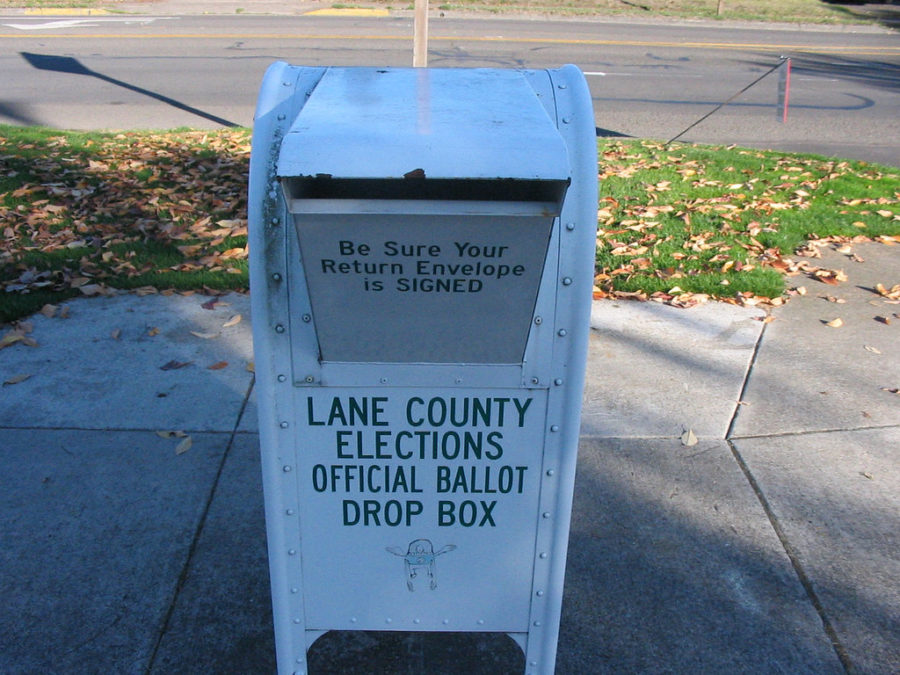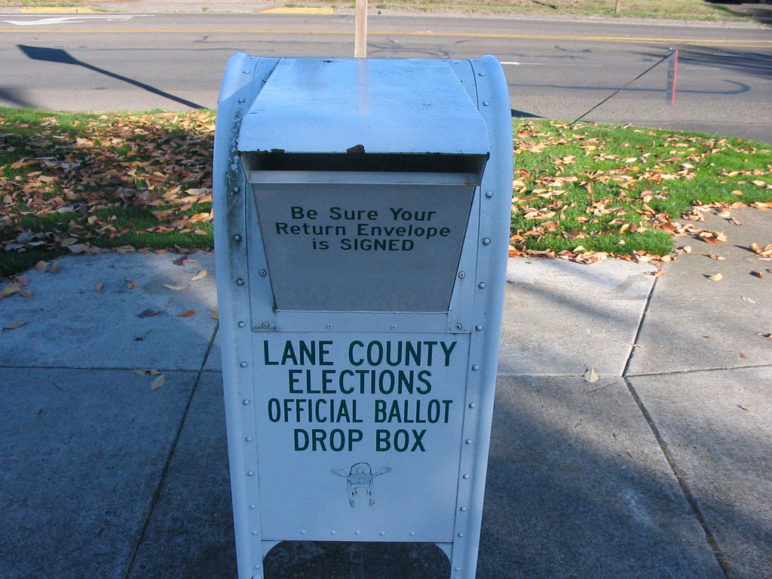Changing the way we elect public officials can change who runs for office, how they run their campaigns, who wins, and how voters feel about their democracy. Sightline believes that better electoral methods can create better campaigns, better options for voters, and more representative governments. In the past months, we have examined:
- Which election methods work best for electing executive officers like the mayor and the governor (we concluded that single-winner Ranked Choice Voting, a.k.a. Instant Runoff Voting (IRV), has a track record of performing well, and Score Runoff Voting (SRV), a.k.a. Star, shows theoretical promise and should be put into practice);
- Which methods work best for electing legislative bodies like the city council or the state house of representatives (we concluded that multi-winner Ranked Choice Voting, a.k.a. Single Transferable Vote, could work well at both the local and statewide level and that Mixed Member Proportional (MMP) could work well for statewide elections);
- State laws and policies governing election reform (Oregon charter counties and cities have a lot of autonomy to change their elections); and
- Voting equipment requirements to count ranked choice ballots (current equipment could count an MMP election, and no equipment is yet ready to count Star ballots).
This article summarizes our current thinking, as of June 2017, about which cities, counties, and state actions advocates could target for reform based on the best combination of legal, political, and equipment opportunity. First we provide brief summaries of each priority action; at the bottom of the article you’ll find a table summarizing this information.
1. Switch from gerrymandered district lines to fair multi-member districts.
Timeline: 2020
Impact on Equipment Readiness: Leading up to the change, enough counties could convert to RCV-ready equipment so that, with some sharing between counties, the RCV-ready counties could count the ballots in a statewide RCV election.
Electoral reform: Oregon state legislature could implement STV for elections.
A multi-partisan Redistricting Task Force is currently formulating a plan to use an independent redistricting commission, like California’s, to prevent partisan gerrymandering in Oregon. But Oregon could do California one better by passing a bill or an initiative that would put a permanent end to gerrymandering. By requiring the independent commission to draw multi-member districts and using a proportional election method called Single Transferable Vote (STV), Oregon could slash the number of “wasted” votes and increase accountability and representativeness of elected officials.
For example, the commission could draw 10 House districts, and voters in each would elect six representatives and three senators using a multi-winner ranked ballot. Alternatively, the commission could draw 20 House districts, and voters could elect three representatives from each and continue electing one senator from each of 30 districts.
The law or initiative could also require counties to acquire RCV-ready equipment whenever they turn over and, in the interim, ask counties with capable equipment to count the ranked ballots.
2. Use Mixed Member Proportional (MMP) voting to elect the state legislature.
Timeline: 2020
Impact on Equipment Readiness: Current equipment can already count MMP ballots.
Electoral Reform: Oregon voters would elect state legislators via Mixed Member Proportional voting.
Alternatively, a law or initiative could implement an independent redistricting commission and the same method that New Zealand uses to achieve proportional representation, called Mixed Member Proportional (MMP). The independent commission would draw 30 districts, each of which would elect one senator and one representative. Voters would also get to cast a vote for their favorite party, and those votes would elect representatives from regional party lists.
For example, a coastal, a metro, and an eastern region could each elect 10 regional representatives. These regional representatives would allow voters to have more voice, break the two-party duopoly, and combat partisan gridlock by adding urban conservatives, rural progressives, and other viewpoints to the house of representatives.
Current voting equipment can already count MMP ballots.
3. Bloc voting charter cities in counties with RCV-ready or -capable voting equipment could adopt multi-winner RCV.
Timeline: 2018-2022
Impact on Equipment Readiness: This reform would take advantage of existing equipment.
Electoral Reform: Charter bloc voting cities could use STV for city office elections.
Many cities in Oregon already use multi-member districts and bloc voting to elect city councilors. For example, Lake Oswego elects three city councilors every two years. All candidates run in a single pool, voters get to vote for three, and the three candidates with the most votes win. The problem with this method is that voters in the majority can elect all three councilors, leaving voters in the minority with no voice on the council. Even if voters in the minority make up one-third or more of voters, they don’t have the chance to elect one of the three councilors.
In the seven Oregon counties with RCV-ready or -capable equipment, 25 charter cities use bloc voting. Each of those is a ripe target for advocates to show how multi-member districts with ranked-choice voting could yield better representation. Any of these 25 bloc voting charter cities could amend its charter to change its ballots from “Vote for Three” to “Rank three Candidates” and immediately achieve much fairer representation of the voters.
4. Bloc voting charter cities in counties with Clear Ballot voting equipment could adopt multi-winner RCV.
Timeline: 2018-2022
Impact on Equipment Readiness: If a city adopts RCV and its county requests an RCV software module from Clear Ballot, then all counties using Clear Ballot (currently 13 in Oregon and Washington) would become RCV-capable.
Electoral reform: This would institute STV for city office elections.
Any bloc voting charter city located in a county using Clear Ballot voting equipment could also amend its charter to allow voters to rank candidates for city council. Although Clear Ballot equipment is not RCV-ready, it could easily become so if the manufacturer writes and certifies a software module. If a charter city adopted RCV (either multi-winner STV or single-winner IRV), or especially if several charter cities within a county did, the county would need to ask Clear Ballot to write the software module. This would have the additional benefit that now the thirteen counties in Oregon and Washington using Clear Ballot would have access to the module and could instantly become RCV-ready.
In the eleven Oregon counties with Clear Ballot equipment, 14 charter cities use bloc voting. These 14 cities could be targets for advocates.
5. Charter counties or charter cities in counties with Clear Ballot equipment could adopt RCV.
Timeline: 2018-2022
Impact on Equipment Readiness: If a county or city adopts RCV and the county requests an RCV software module from Clear Ballot, then all counties using Clear Ballot (currently 13 in Oregon and Washington) would become RCV-capable.
Electoral Reform: These counties and cities could adopt either STV or IRV for local elections.
Six charter counties (Hood River, Jackson, Josephine, Lane, Multnomah, Washington) use Clear Ballot equipment. Another five code counties (Coos, Deschutes, Harney, Klamath, Linn) use Clear Ballot. If any of the six charter counties, or any of the 52 charter cities within any of the 11 Oregon Clear Ballot counties, adopted RCV, Clear Ballot would need to write an RCV software module, and the thirteen counties in Oregon and Washington using Clear Ballot would have access to the module and could instantly become RCV-ready.
Portland, a charter city in Multnomah County, could be a particular target for advocates. As Sightline has analyzed, the Portland City Council is not representative of the city’s residents, and multi-member districts with RCV could help.
6. Charter cities within RCV-ready counties could adopt RCV.
Timeline: 2018-2022
Impact on Equipment Readiness: This reform would take advantage of existing equipment.
Electoral Reform: These cities could use IRV or STV for city elections.
Two code counties (Clatsop and Marion) are RCV-ready. Any of the 8 charter cities in those counties could adopt RCV (either multi-winner STV or single-winner IRV) and immediately implement with no further action needed by the counties. These charter cities could be priority targets for advocates looking to get more Oregon experience with RCV with limited hurdles.
7. Clatsop county or any charter city within an RCV-capable county could adopt RCV.
Timeline: 2018-2022
Impact on Equipment Readiness: This reform would take advantage of existing equipment and prompt counties to purchase third-party software.
Electoral Reform: Clatsop and other RCV-capable charter cities could adopt STV or IRV for local elections.
Benton, a charter county with RCV-capable equipment, has already adopted RCV. Clatsop, another charter county with RCV-capable equipment, could adopt RCV. Four code counties (Columbia, Lincoln, Polk, Tillamook) have RCV-capable equipment, so any of the 21 charter cities within those counties could adopt RCV, and the county could use third-party software to count the city’s ballots.
8. Lane County could adopt Star Voting.
Timeline: 2018
Impact on Equipment Readiness: If a county or city adopts Star Voting, a.k.a. SRV, and the county requests a Star Voting software module from Clear Ballot, then all counties using Clear Ballot (currently 13 in Oregon and Washington) would become Star Voting-capable.
Electoral Reform: Lane County could adopt Star Voting for county elections.
Lane County commissioners might put a charter amendment on the 2018 ballot adopting Star Voting for county commissioner elections. Advocates could work to convince voters to approve the initiative. If the initiative wins, Lane County could ask Clear Ballot to develop a Star Voting software module, and all Clear Ballot counties in Oregon and Washington would become Star Voting-ready.
9. The two code counties that are already planning to replace their voting equipment in the next five years could buy RCV-ready equipment.
Timeline: 2018-2022
Impact on Equipment Readiness: Two counties and all the cities within them would become RCV-ready.
Electoral Reform: These counties and the cities within them would face no technical obstacles to adopting RCV.
Two code counties, Douglas and Yamhill, are considering updating their voting equipment in the next two to five years. These counties will be spending money on new equipment anyway, so they might as well make sure that equipment gives the flexibility for the charter cities within them, or for the state, to adopt ranked choice voting.
Advocates could encourage the county auditors and councils to choose RCV-ready equipment to preserve flexibility, or they could encourage any charter city within any of the counties to adopt RCV, thus necessitating RCV-ready equipment.
10. Umatilla County could adopt RCV and purchase RCV-ready equipment.
Timeline: 2018-2022
Impact on Equipment Readiness: Umatilla county and all the cities within it would become RCV-ready.
Electoral Reform: Umatilla and its charter cities could use IRV or STV for local elections.
Umatilla, a charter county, has outdated voting equipment, and we are not aware of plans to replace it. Advocates could encourage Umatilla to amend its charter to adopt RCV, pushing the county to upgrade its equipment.
Summary of potential Oregon advocacy efforts
The table below shows our estimate of the timeline and impacts of each of the above efforts. Darker blue means a quicker or larger impact (for example, short-term and statewide), while lighter blue indicates longer-term or impact on only one or a few counties or cities within Oregon.
| Timeline | Electoral System Reform Goal | Equipment Needs or Updates | |
| 1. State redistricting into multi-member districts | 2020 | STV | All counties would need RCV-ready equipment. |
| 2. State redistricting into MMP districts | 2020 | MMP | No new equipment required: Existing equipment can count MMP ballots. |
| 3. STV in bloc voting cities with RCV-capable equipment | 2018-2022 | STV | No new equipment required: This effort would take advantage of existing equipment. |
| 4. STV in charter bloc voting cities with Clear Ballot equipment | 2018-2022 | STV | Clear Ballot would need to produce RCV-capable software. |
| 5. RCV in charter cities and counties with Clear Ballot equipment | 2018-2022 | IRV or STV | Clear Ballot would need to produce RCV-capable software. |
| 6. Charter counties and cities with RCV-ready equipment adopt RCV | 2018-2022 | IRV or STV | No new equipment required: This effort would take advantage of existing equipment. |
| 7. Charter county and cities with RCV-capable equipment | 2018-2022 | IRV or STV | No new equipment required: This effort would take advantage of existing equipment. |
| 8. Lane County adopts SRV | 2018 | Star | Clear Ballot would need to produce SRV-capable software. |
| 9. Two code counties acquire RCV-ready equipment | 2018-2022 | N/A: Not an attempt to change electoral system | Update to RCV-ready equipment. |
| 10. Umatilla County acquires RCV-ready equipment | 2018-2022 | N/A: Not an attempt to change electoral system | Update to RCV-ready equipment. |











